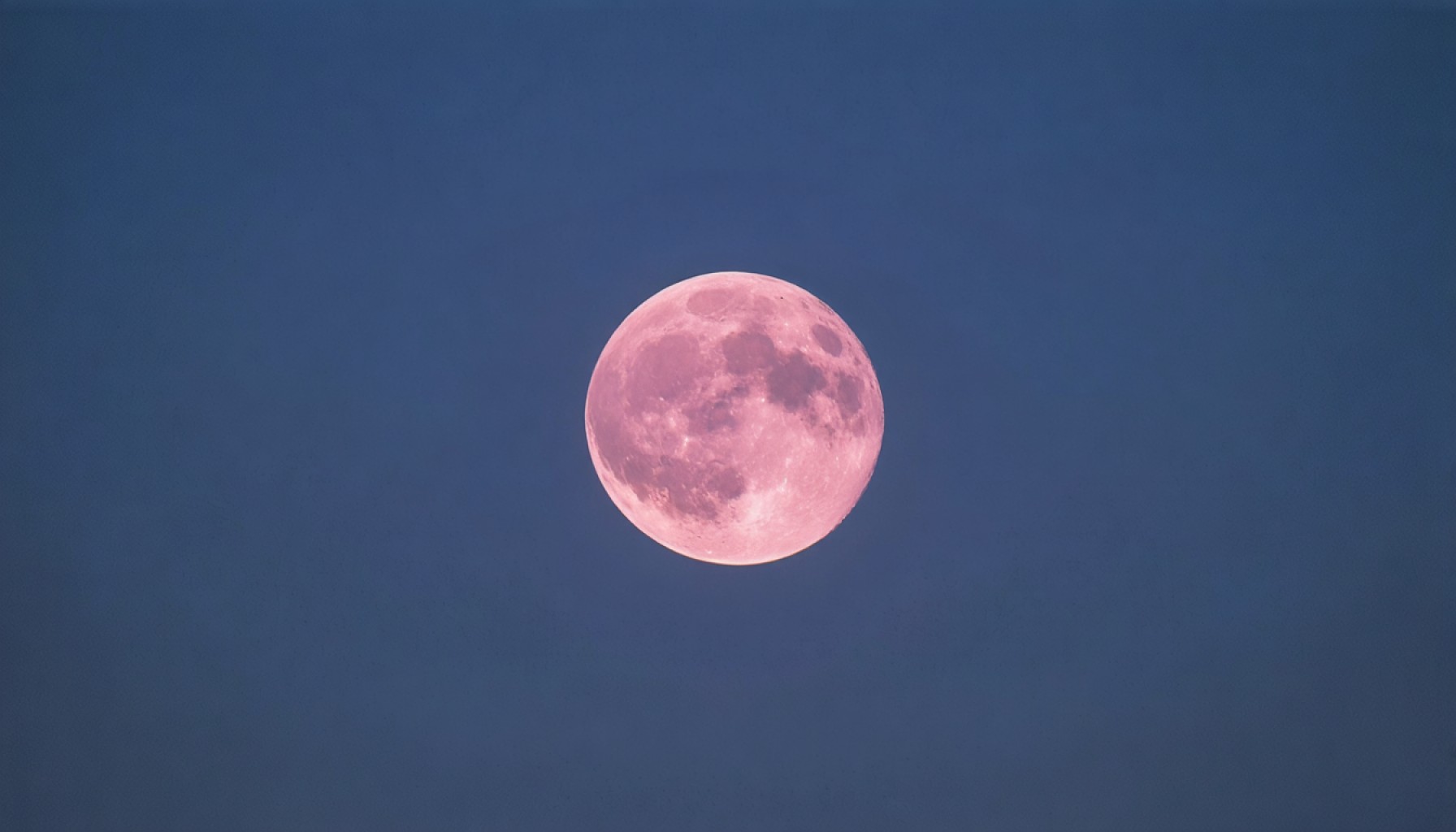- The Pink Moon, named after the Creeping Phlox flower, will rise tomorrow evening, though it will not appear pink.
- This April full moon is a ‘Micromoon’, appearing smaller due to its apogee position in its orbit.
- The Micromoon reaches peak brightness at 8:22 PM ET, best viewed from areas without urban light pollution.
- Optimal viewing spots include beaches, hilltops, open fields, and city rooftops for a clear sky perspective.
- The moon will be near Spica, the brightest star in Virgo; trace the Big Dipper’s handle to Arcturus and then to Spica.
- In Central and South America, some might witness the Moon occulting Spica, especially in cities like Buenos Aires and Montevideo.
- The presence of the Pink Moon symbolizes the changing seasons and cultural interconnections across the world.
https://youtube.com/watch?v=rZfbJy5XpQs
Tomorrow evening, as twilight gracefully fades, the skies will unveil a celestial wonder: the Pink Moon. Despite its charming name, this April full moon will not cast a rosy hue upon us; instead, it earns its moniker from the vibrant Creeping Phlox, a flower whose pink petals herald spring’s awakening.
This year’s April full moon takes on a unique persona as a ‘Micromoon’—an event where the moon appears smaller than usual. This phenomenon occurs as the Moon reaches its apogee, the farthest point in its elliptical orbit around our planet. At a precise 8:22 PM ET, the Micromoon will reach its peak brightness, offering an enchanting spectacle for anyone with a clear view of the eastern horizon.
So, where should one go to capture this lunar magic? Seek out places unhindered by urban lights—a tranquil beach, a secluded hilltop, or an open field. In cities, head to rooftops or find tall structures that offer a glimpse of the expansive sky. These vantage points will ensure that you witness this marvel in its full glory.
Astrological enthusiasts will find extra delight as the moon dances with Spica, the brightest star in the Virgo constellation. To find this celestial duo, trace the Big Dipper’s handle in a graceful curve through the sky to Arcturus, and then let your eyes glide to Spica. In regions stretching across Central and South America, lucky stargazers might even witness an occultation, where the Moon briefly conceals Spica—a delicate cosmic embrace visible in cities like Buenos Aires and Montevideo.
While the Moon may not blush, the allure of its presence lies in the magic it weaves across cultures and continents. It’s a reminder of the changing seasons and the cyclical dance of the universe. So, as you step out tomorrow night and cast your gaze upward, let the Pink Moon kindle a sense of wonder and interconnection with the vastness of the night sky and the whispers of time.
Why You Shouldn’t Miss the Pink Micromoon This April
Unlocking the Secrets of the Pink Micromoon
The upcoming Pink Micromoon offers a unique spectacle due to its dual significance as a “Pink Moon” and a “Micromoon.” While its name might suggest a colorful appearance, it is named after the creeping phlox flower that blooms this time of year. Additionally, this particular full moon will appear smaller than usual because it coincides with the Moon’s apogee—the point in its orbit where it is furthest from the Earth. This fascinating celestial display will peak at 8:22 PM ET.
How to Best Experience the Pink Micromoon
To fully appreciate the Pink Micromoon, consider the following tips:
– Seek Dark Skies: The best views come from areas far from city lights—try visiting a beach, hilltop, or open field. In urban areas, rooftop access or tall buildings may provide an unobstructed view.
– Use a Telescope or Binoculars: While the Micromoon is visible to the naked eye, optical aids can enhance details, providing a richer experience.
– Time Your Observations: Aim to start observing around sunset when the Moon begins to rise for the best contrast against the evening sky.
The Cosmic Dance: Moon and Stars
Astrologically inclined observers will revel in the Micromoon’s dance with Spica, the brightest star in Virgo. Tracking the Big Dipper and Arcturus will guide you to Spica. In parts of Central and South America, this event may include an occultation—where the Moon temporarily obscures Spica—visible in cities like Buenos Aires and Montevideo.
Exploring the Science and Significance
From a scientific perspective, the Micromoon offers opportunities for learning about lunar apogees and the Moon’s elliptical orbit. As the Moon’s distance from Earth fluctuates, varying its apparent size, it emphasizes the dynamic nature of celestial bodies.
Real-World Applications and Considerations
– Photography Tips: Capture the Moon using a long exposure to highlight details. A tripod and remote shutter release can minimize shake and enhance clarity.
– Cultural Reflections: The Pink Moon symbolizes renewal and a shift towards spring, a key element in many cultural traditions and stories.
Looking Beyond: Future Celestial Events
Mark your calendars for upcoming astronomical phenomena—lunar eclipses, meteor showers, and supermoons are all celestial wonders worth experiencing. Stay informed via astronomy resources like NASA or the Sky & Telescope.
Quick Tips for the Pink Micromoon Viewing
– Set Reminders: Ensure you don’t miss the scheduled viewing time.
– Pack Essentials: Bring warm clothing, snacks, and your camera gear.
– Invite Friends: Sharing the experience can make the event even more memorable.
In conclusion, the Pink Micromoon is a perfect celestial event to spark wonder and curiosity, reminding us of the beauty and complexity of the universe. Enjoy the show, and may it inspire you to explore further celestial marvels.
